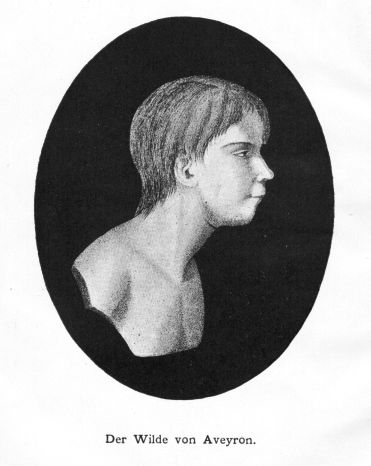Chapter 5: Socialization

Introduction to Socialization
In the summer of 2005, police detective Mark Holste followed an investigator from the Department of Children and Families to a home in Plant City, Florida. They were there to look into a statement from the neighbour concerning a shabby house on Old Sydney Road. A small girl was reported peering from one of its broken windows. This seemed odd because no one in the neighbourhood had seen a young child in or around the home, which had been inhabited for the past three years by a woman, her boyfriend, and two adult sons.

Who Was the Mysterious Girl in the Window?
Entering the house, Detective Holste and his team were shocked. It was the worst mess they had ever seen; infested with cockroaches, smeared with feces and urine from both people and pets, and filled with dilapidated furniture and ragged window coverings.
Detective Holste headed down a hallway and entered a small room. That is where he found a little girl with big, vacant eyes staring into the darkness. A newspaper report later described the detective’s first encounter with the child:
She lay on a torn, moldy mattress on the floor. She was curled on her side. Her ribs and collarbone jutted out. Her black hair was matted, crawling with lice. Insect bites, rashes and sores pocked her skin. She was naked — except for a swollen diaper. Her name, her mother said, was Danielle. She was almost seven years old. (DeGregory, 2008)
Detective Holste immediately carried Danielle out of the home. She was taken to a hospital for medical treatment and evaluation. Through extensive testing, doctors determined that, although she was severely malnourished, Danielle was able to see, hear, and vocalize normally. Still, she would not look anyone in the eyes, did not know how to chew or swallow solid food, did not cry, did not respond to stimuli that would typically cause pain, and did not know how to communicate either with words or simple gestures, such as nodding “yes” or “no.” Likewise, although tests showed she had no chronic diseases or genetic abnormalities, the only way she could stand was with someone holding onto her hands, and she “walked sideways on her toes, like a crab” (DeGregory, 2008).
What had happened to Danielle? Put simply: beyond the basic requirements for survival, she had been neglected. Based on their investigation, social workers concluded that she was left almost entirely alone in rooms like the one where she was found. Without regular interaction — the holding, hugging, talking, the explanations and demonstrations given to most young children — she had not learned to walk or eat, speak or interact, play, or even understand the world around her. From a sociological point of view, Danielle had not been socialized.
Socialization is the process through which people are taught to be proficient members of a society. It describes how people come to understand and internalize societal norms and expectations, accept society’s beliefs, and be aware of societal values. It also describes the way people come to be aware of themselves and to reflect on the suitability of their behaviour in their interactions with others.
Socialization occurs as people engage and disengage in a series of roles throughout life. Each social role, like the role of son or daughter, student, friend, employee, etc., is defined by the behaviour expected of a person who occupies a particular position. Roles are defined by social expectations and internalized social norms that define what people should do when they occupy a social role in society. People expect a father to act like a father and will often have very specific criteria for determining how a proper father acts.
Socialization is not the same as socializing (interacting with others, like family, friends, and coworkers); to be precise, it is a sociological process that occurs through socializing. As Danielle’s story illustrates, even the most basic human activities are learned through interactions with others.
Even physical tasks like sitting, standing, and walking did not automatically develop for Danielle as she grew. Without socialization, Danielle had not learned about the material culture of her society (the tangible objects a culture uses). For example, she could not hold a spoon, bounce a ball, or use a chair for sitting. She also had not learned its nonmaterial culture, such as its beliefs, values, and norms. She had no understanding of the concept of family, did not know cultural expectations for using a bathroom for elimination, and had no sense of modesty. Most importantly, she had not learned to use the symbols that make up language — through which people learn about who they are, how they fit with other people, and the natural and social worlds in which they live.
In the following sections, the importance of the complex process of socialization and how it takes place through interaction with many individuals, groups, and social institutions will be examined. Socialization is not only critical to children as they develop, but also a lifelong process through which people become prepared for new social environments and expectations in every stage of their lives. Self development is the process of coming to recognize a stable sense of a “self” through socialization.
Additional Optional Resources
Jonathan Haidt on the Rise of the Anxious Generation; Intelligence Squared
How has childhood socialization changed and what are its impacts? Dr. Haidt links rising levels of anxiety, depression and self-harm among young people to declines in play-based learning and phone-based childhood. Can this trend be slowed or reversed? Do we need strongly policies beyond limiting cell phones in schools such as those advanced by Sweden?
Follow-up Resources:
- Jonathan Haidt. 2024. The Anxious Generation.
- Statistics Canada. 2024. Scrolling through the social media stats.
Interview with Professor Frank Furedi on ‘Paranoid Parenting’ by Matthew Wilkin
How has childhood socialization changed? In this podcast, the host talks to Dr. Furedi about how children have become more protected since the 1970s. How does fear drive ‘paranoid parenting’? What are the impacts?
Teach Girls Bravery, Not Perfection by Reshma Saujani
In this TedTalk, author of Girls Who Code, delves into questions about how we socialize girls and why we need to teach them to be comfortable with imperfection.
Section Summary
5.1 Theories of Self Development
Psychological theories of self development have been broadened by sociologists who explicitly study the role of society and social interaction in self development. Charles Cooley and George Mead both contributed significantly to the sociological understanding of the development of self. West and Zimmerman present a performative model of doing gender to explain the socialization of gender patterns.
5.2 Why Socialization Matters
Socialization is important because it helps uphold societies and cultures. It is also a key part of individual development and internalization of societal expectations. Research demonstrates that who a person is is affected by both nature (genetic and hormonal makeup) and nurture (the social environment in which a person is raised). Sociology is most concerned with the way that society’s influence affects individual behaviour patterns, which is made clear by the way behaviour varies historically and cross-culturally.
5.3 Theoretical Perspectives on Socialization
Sociologists working in the theoretical paradigms of structural functionalism, conflict theory, and symbolic interactionism approach the topic of socialization in distinctive way. For instance, structural functionalists perceive socialization as a fundamental component in society, because it trains members to operate successfully within it as well as it perpetuates culture by transmitting it to new generations. On the other hand, conflict theorists would claim that the norms and behaviours that socialization teaches us are those that benefit the dominant groups in society, and thus, socialization reproduces inequality from generation to generation by conveying different expectations and norms to those with different social characteristics. Conversely, symbolic interactionists studying socialization are more concerned with face-to-face exchanges and symbolic communication. For this group of scholars, socialization is not a book of social rules that we are given but an ongoing process of interaction with others in specific situations.
5.4 Agents of Socialization
Direct interactions with social groups, like families and peers, teach children and teenagers how others expect them to behave. Likewise, a society’s formal and informal institutions socialize its population. Schools, workplaces, and the media communicate and reinforce cultural norms and values.
5.5 Socialization Across the Life Course
Socialization is a lifelong process recurring as people enter new phases of life, such as adulthood or old age. Resocialization is a process that removes the socialization people have developed over time and replaces it with newly-learned rules and roles. Because it involves removing old habits that have been built up, resocialization can be a stressful and difficult process. Total institutions are places where the effects of resocialization are felt the greatest.
Media Attributions
- Shudokan Halloween (children’s party) – 34 © Roman Boldyrev is licensed under a CC BY-NC-SA (Attribution NonCommercial ShareAlike) license
- Victor of Aveyron © Unknown is licensed under a Public Domain license

